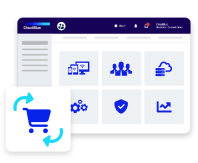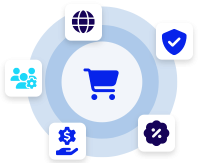A pricing strategy is a deliberate approach businesses use to determine the cost of their products or services.
In the SaaS industry, this means setting prices for software offerings in a way that attracts customers, stays competitive in the market, and meets the company’s financial goals. Whether targeting individual consumers or B2B clients, choosing the right pricing strategy is essential to balancing affordability for customers and profitability for the business.
In a competitive market, a pricing strategy is more than just assigning a number to a product. It reflects the value a company delivers, how it positions itself against competitors, and its broader goals, like expanding market share or maximizing revenue.
Types of Pricing Strategies for SaaS Businesses
SaaS companies can use a variety of pricing strategies, each with its own strengths and challenges. For example, flat rate pricing charges a fixed fee for software access, while tiered pricing offers different plans with varying features. Usage-based pricing scales costs with customer activity, and freemium strategies allow users to access basic features for free while paying for premium options.
Competition also plays a big role in pricing. Competitive pricing strategies involve setting prices in line with, or slightly below, rivals to attract price-sensitive customers. Some businesses use value-based pricing, where the cost is determined by the perceived benefits customers gain from the software, ensuring customers feel they’re getting a good deal.
Each approach caters to different customer segments, product types, and business goals, making it crucial for SaaS companies to align their pricing strategy with their market positioning.
Why Pricing Strategies Matter
A well-thought-out pricing strategy can make or break a SaaS business. Setting prices too high may push customers to competitors, while pricing too low risks undervaluing the product and hurting profitability. Strategies also affect customer perception; for instance, premium pricing can position a software solution as high-end, while lower costs may attract budget-conscious users.
Beyond attracting customers, pricing strategies impact long-term growth. For example, offering a free trial or freemium plan can drive user acquisition, while tiered pricing enables customers to upgrade as their needs grow. Understanding the market, competition, and customer needs is critical to developing pricing strategies that align with a SaaS business’s objectives.













